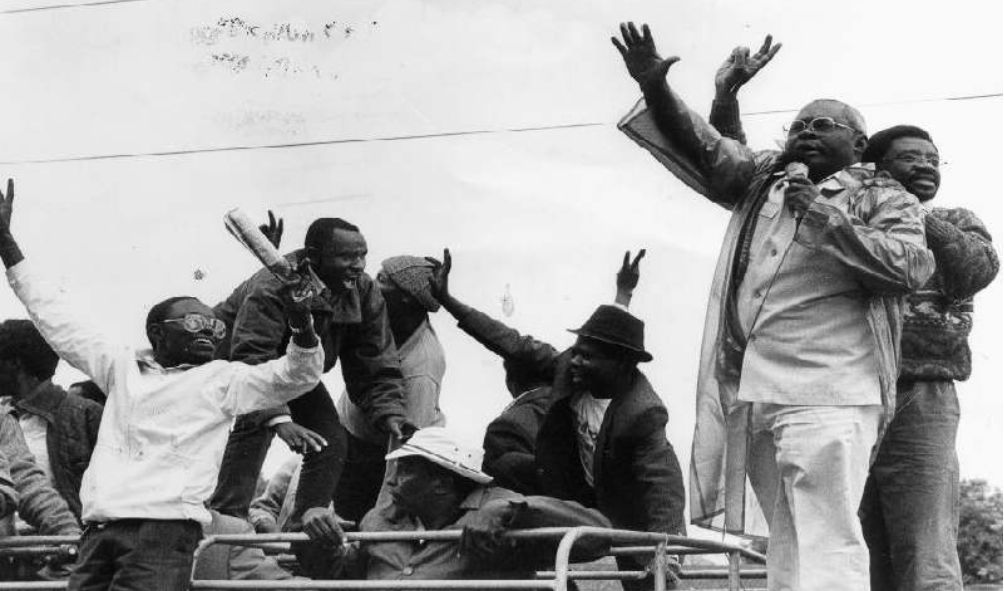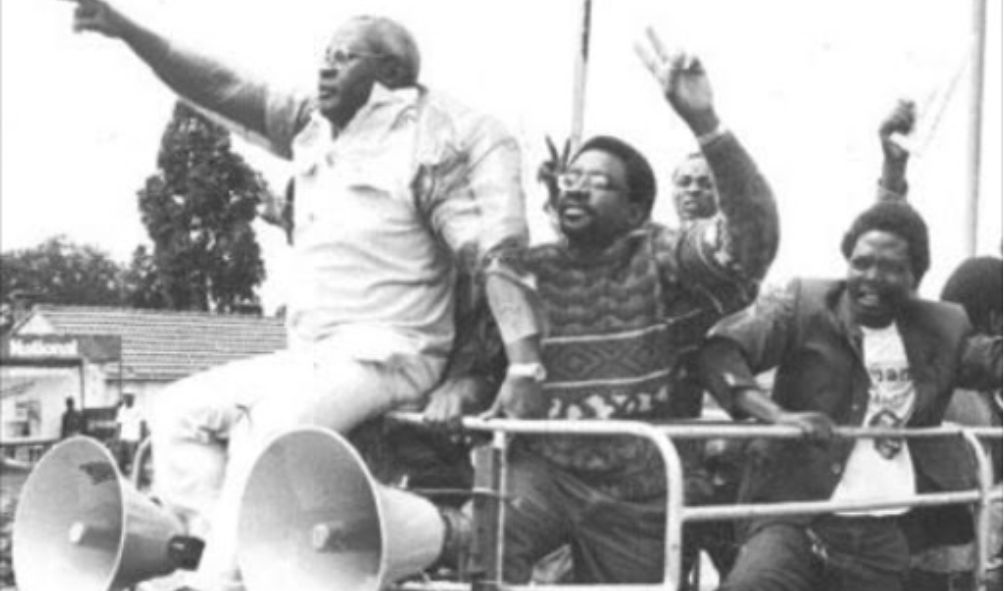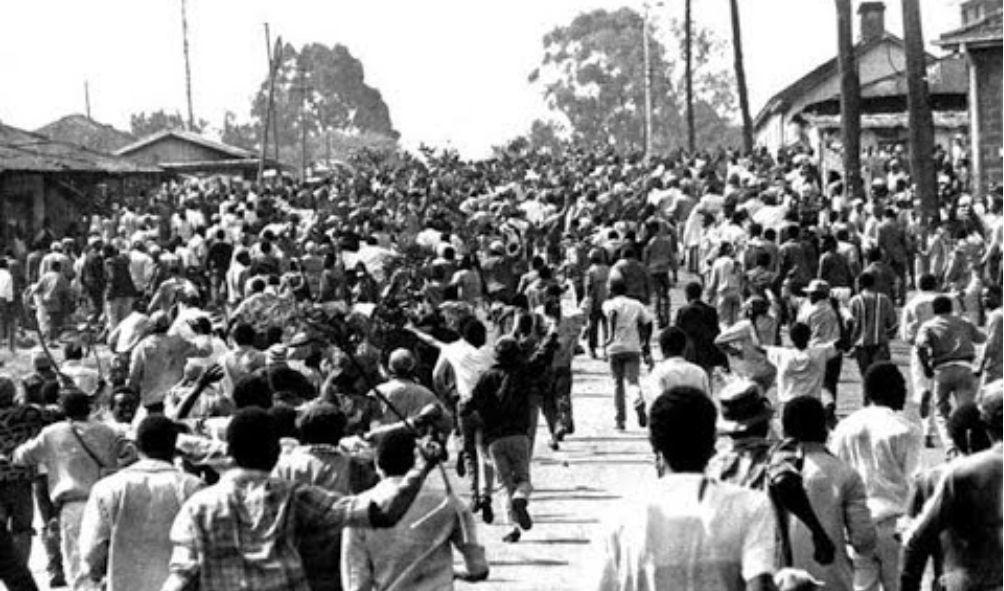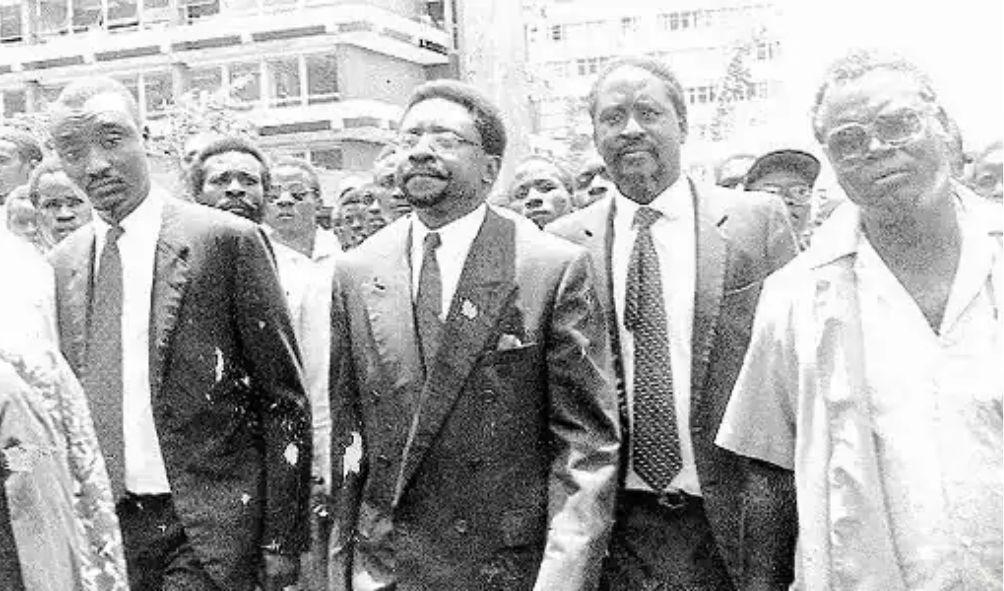Raila Odinga’s Saba Saba Revival: Can He Reignite The 90s Revolution?
The fact that protests demanding the repeal of the Finance Act, 2023, which underpins President William Ruto’s first budget, began today, July 7, may indicate opposition leader Raila Odinga’s impeccable timing. Or demonstrate a leader hopelessly trapped in history.
For older generations, July 7 or Saba Saba (Seven Seven) commemorates the day in 1990 that marked the beginning of the end of Kenya’s one-party dictatorship.
Even with their leaders arrested, thousands of Kenyans responded to calls to attend a pro-democracy rally at Kamukunji grounds to push for the end of President Daniel Moi’s monolithic Kanu machine-led dictatorship.
Police dispatched to disperse the crowds by any means necessary encountered a populace that was no longer cowering in fear.
The clashes between police armed with tear gas, batons, and bullets and young, stone-throwing protesters not only became the stuff of legend but were also widely acknowledged as a turning point in the fight for democracy and human rights.
That was the day leaders of the nascent democracy movement, including a young Raila Odinga, James Orengo, Paul Muite, and Gitobu Imanyara (later MPs), and campaign icons Kenneth Matiba, Charles Rubia, Martin Shikuku, and Raila’s father, Oginga Odinga, called a rally at Kamukunji to press the campaign launched four months earlier for the revival of the multi-party system.

The rally was deemed illegal, and on the eve of the event, key organizers Matiba, Rubia, and Raila were arrested and incarcerated.
ALSO READ: Saba Saba Showdown: Azimio Launches Anti-Ruto Demos at Kamukunji Today
During those times, the government could arrest and imprison anyone it wished to restrict without a trial.
One of the arrests’ lesser-known victims was a young attorney in Muite’s firm, Mohammed Ibrahim, who is now a Supreme Court judge.
Muite evaded capture and went into hiding, while Gibson Kamau Kuria, a legal colleague, fled the country ahead of his pursuers. However, some of the most prominent campaigners, including Shikuku and Orengo, eluded police.
On the day in question, they snuck past the security cordon and triumphantly drove towards Kamukunji atop a pick-up, creating one of the most iconic photographic images of Saba Saba. More than thirty individuals perished, nearly all at the hands of police.
More than one thousand people were arrested and charged with a variety of offenses relating to unlawful assembly and procession, breach of the peace, and disorderly conduct.

The state won the battle but lost the war, as the once-impenetrable Moi regime capitulated to demands for the end of the one-party system by the end of 1991.
Since then, Saba Saba has served as the rallying cry for numerous initiatives aimed at constitutional, legal, economic, and social landscape transformation.
This was most evident following Moi’s return to power in 1992 when civil society luminaries led by lawyer and former political detainee and exile Willy Mutunga launched a campaign for constitutional reform to strengthen the country’s democratic foundations.
ALSO READ: Saba Saba Rally All Set: Leaders Demand Police Protection for Nairobi March
Before the 1997 elections, the campaign gained momentum by launching monthly demonstrations on July 7, followed by Nane Nane (Eight Eight) on August 8, Tisa Tisa (Nine Nine) on September 9, and so on.
The demonstrations, which turned into running battles with police, and the plans for a National Convention to declare its “sovereignty” compelled Moi to step down.

Before the 1997 General Elections, the Inter-Parties Parliamentary Group talks produced limited constitutional reforms.
But the Spirit of Saba Saba, also known as the Spirit of Ufungamano after the church hall adjacent to the University of Nairobi that served as the campaign’s nerve center, persisted.
President Mwai Kibaki and the then-prime minister of the Grand Coalition, Raila, played a crucial role in the 2010 ratification of a new constitution.
The spirit that Raila intends to evoke by selecting July 7 as the date for demonstrations is thus evident. The veteran of the opposition began his protests in March as part of ongoing demonstrations against Ruto’s election victory.
His primary demand was “Open the Servers” as he sought to prove that an examination of the Independent Electoral and Boundaries Commission’s election results database would demonstrate that he was the actual winner of the August 2022 presidential election.
In addition, he demanded reductions in the prices of food, gasoline, electricity, and other necessities to capitalize on the growing public discontent with Ruto’s Kenya Kwanza administration.
ALSO READ: Azimio Considers Raila’s Exit to Counter President Ruto
Ruto agreed to dialogue, which was to be led by a 14-member parliamentary team comprised of equal numbers of Kenya Kwanza and the opposition Azimio la Umoja-One Kenya alliance representatives.
The talks never really got off the ground, and Raila had already withdrawn his participation by the time the Finance Bill – which outlines the government’s revenue-raising and spending proposals – reached Parliament.
Kenya Kwanza used its numerical strength to force the easy passage of the bill with the contentious taxation proposals intact, giving Raila the perfect reason to return to the streets.
Tuesday’s public “consultations” at the Kamukunji grounds resulted in the adoption of several resolutions, such as withdrawing from the parliamentary talks and organizing a nationwide demonstration to demand the repeal of the taxation laws.
It wasn’t only about the Finance Bill, however. At the rally, every speaker focused on removing Ruto from power. Raila, his running mate in the 2022 presidential election, Martha Karua, and other Azimio principals, including former Defence CS Eugene Wamalwa and former Kakamega governor Wycliffe Oparanya, have stated that the ultimate objective is the “people power” overthrow of the Kenya Kwanza regime.
The luminaries of Azimio may be confident that Ruto has given them the rope to hang him by enacting unpopular taxes. They discussed expanding the protests, which were previously limited to Nairobi and Kisumu, to the rest of the nation, citing the fact that high taxes and rising consumer prices hurt everyone.
ALSO READ: Kenya Kwanza Committee Accuses Azimio la Umoja of Deceptive Tactics
Raila provided a lengthy history of Saba Saba, concluding that the spirit that compelled strongman Moi to step down should have no trouble removing Ruto from power.
Public discontent
While there is ample public discontent to exploit in the wake of Ruto’s failed election promise of immediate cost of living relief, Raila may have overlooked the fact that the majority of his audience may not have fond memories of Saba Saba. On Saba Saba 2023, it will be 33 years to the day since July 7, 1990.
A quick review of video footage from last Tuesday’s Kamukunji rally revealed that the vast majority of attendees were young men and, at most, a few women in their late teens or early twenties.
They were not yet born during the original Saba Saba, so they have no connection to that date. Even those in their forties who were present last week would have been below their mid-teens in 1990, with little memory of the momentous events and their significance.
While Raila undoubtedly has several grievances to exploit, he must keep in mind that for the majority of those he is calling out onto the streets, the present moment is far more significant than Saba Saba or the entire history of the multi-party campaign.
Many of them would have no memory or experience of life under the one-party regime’s police state. Nonetheless, economic mismanagement by the Ruto administration is a potent source of anti-government sentiment.
Thousands of dissatisfied and enraged young people in Nairobi and Kisumu are just waiting for the signal to take to the streets if previous demonstrations are any indication.
ALSO READ: Ruto Mocks Azimio Amid Protests: Wamechanuka!
The bitter aftermath of the Finance Act could provide fodder for captive ears in Mombasa and other parts of the coast region, western Kenya, the eastern region, and likely pockets in some urban areas of Kenya Kwanza strongholds in the Rift Valley and Mount Kenya.
The intensity will depend on Raila’s ability to mobilize and organize, as well as the government’s countermeasures.
Raila Odinga’s Saba Saba Revival: Can He Reignite The 90s Revolution?
HEY READER. PLEASE SUPPORT THIS SITE BY CLICKING ADS. DON’T FORGET TO HIT THE NOTIFICATION BELL FOR MORE UPDATES AROUND THE GLOBE.
